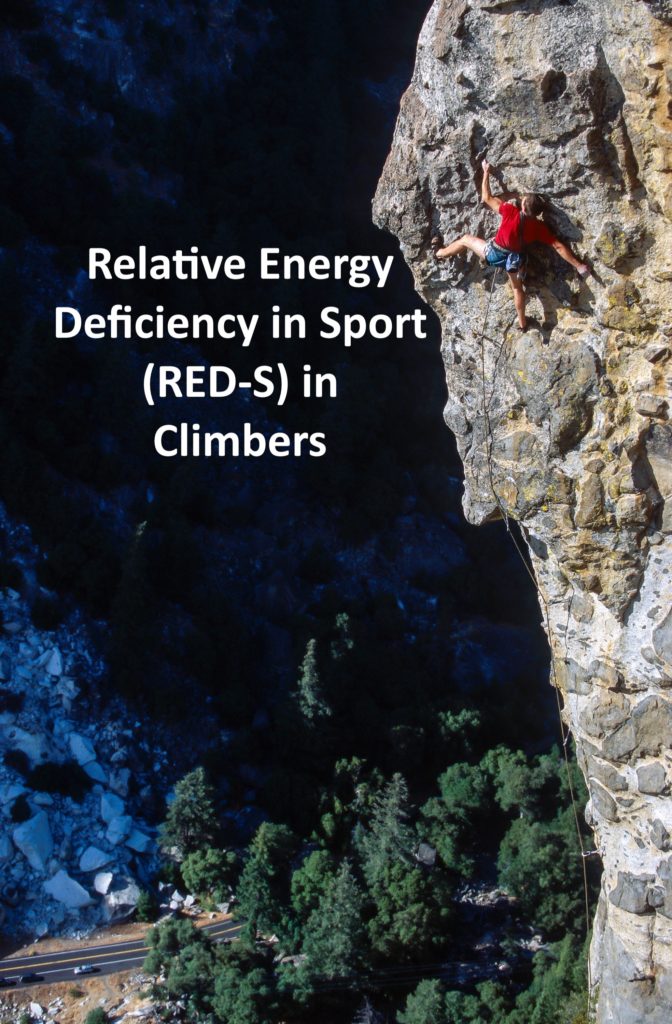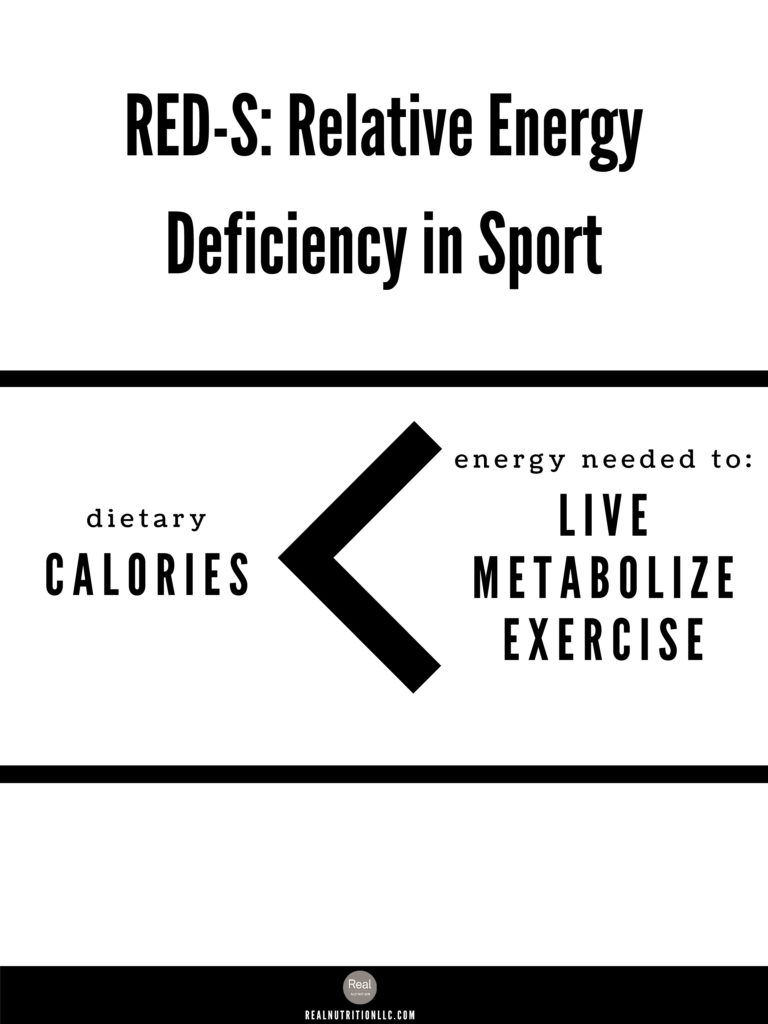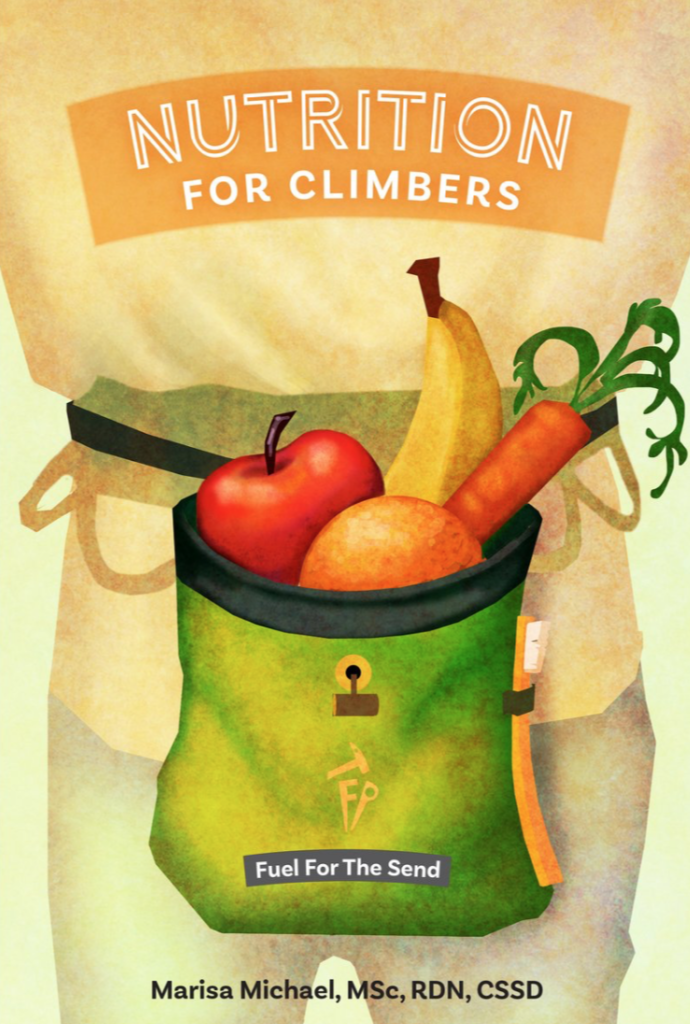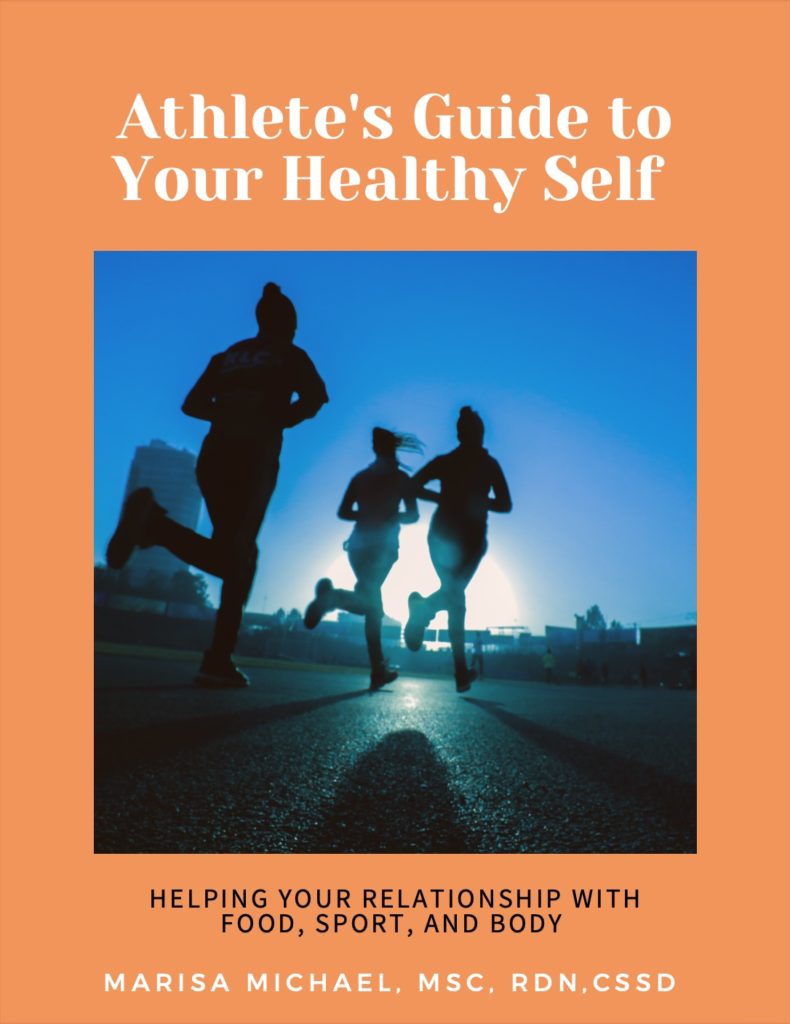
Female Athlete Triad
Once upon a time in the 70’s, there was a phenomenon called Female Athlete Triad. Researchers and medical providers noticed something about certain athletes that they worked with. These females had commonalities of eating disorder, osteoporosis (low bone density), and amenorrhea (lost period, or a period that never started when it should have).
Over the years, Female Athlete Triad became more well-known. And they started noticing something else: it wasn’t just amenorrhea, osteoporosis, and eating disorders. If a female was under-eating even without an eating disorder, she had some of these negative health consequences. Maybe it wasn’t quite osteoporosis, but it was recurring stress fractures. Maybe it wasn’t a lost period, but the period was spotty and inconsistent. Maybe it wasn’t a full-blown eating disorder, but there was under-eating or dieting. There was a spectrum, it seemed.
Fast forward to 2014, when a landmark position paper laid out the framework for a new syndrome: Relative Energy Deficiency in Sport (REDs).
What is Relative Energy Deficiency in Sport (REDs)?
RED-S is a term that refers to low energy availability. It affects both males and females (and whatever gender you identify as. If you are human, you can get REDs. What the heck is it? Glad you asked. It’s a fundamental mismatch between calories used and calories eaten. Essentially it means you are under-eating for the activity level your body is doing.
Your body needs energy (calories) for everything it does. Breathing, beating your heart, normal cell turnover, maintaining body temperature, and just basically existing. This is your basal metabolic rate (BMR). The baseline number of calories you need each day if you were literally lying around in your bed all day long. For most people, this number is somewhere between 1100-1700 calories per day. That’s if you’re doing NOTHING.
Now add in any activities. Digestion, walking around the house, sitting, laundry, cooking, talking, thinking, etc. You need more calories to do these activities.
NOW add in any extra training, climbing, or other workouts/exercise. You need more calories to fuel this. Most people need around 2000-3000 calories daily.
If you are not eating enough calories to fuel all these activities (usually around 35-45 calories per kilogram of fat free mass), you may be in a state of low energy availability. This means you are in a calorie deficit.
This is where you say, “Sweet! Maybe I’ll lose some weight!”
And this is where I say, “Not so fast. Bad idea.”
Why?
Because your body has a set point it likes to stay within. And the minute you try to manipulate that with diet, exercise, or both, you are at risk for cyclic dieting, eating disorders, and RED-S. And this is a place you don’t want your body to go. Read on…

What are the signs and symptoms of Relative Energy Deficiency in Sport (REDs)?
- Fatigue
- Irritability, mood disturbances, and depression
- Decreased alertness
- Sleep disturbances
- Missed or irregular periods
- Decreased resting metabolism
- Decreased muscle strength
- Decreased endurance capacity
- Increased risk of injury
- Decreased glycogen stores
- Decreased coordination
- Frequent illnesses due to decreased immunity
- Hormone disruption
- Decreased growth in adolescents
- Gastrointestinal upset
Think about that list. Read it again. If you are experiencing any of these things, how will it affect your climbing? Not good, I can tell you that.
How to I recover from Relative Energy Deficiency in Sport (REDs)?
You need to eat enough! Eat enough food to match your output. Do this with the help of a sports dietitian. If you have underlying conditions that are causing you to eat less than you should (eating disorder, etc.), you need to seek help to resolve that root cause.
Some athletes under-eat inadvertently. They are too busy, too tired, don’t have an appetite, or want to lose weight. But it can backfire in a big way if you’re under-fueling.
If you have been diagnosed with Relative Energy Deficiency in Sport (RED-S), the International Olympic Committee has formulated a set of criteria to help guide your team to know when the time is right to return to training and competition.
This is called RED CAT (Clinical Assessment Tool). This rates the athlete’s risk of health complications into “red light,” “yellow light,” and “green light” categories. “Red light” includes anorexia or other eating disorders, cardiac abnormalities, dehydration, and unstable life-threatening conditions. This means no climbing (or other sports) until stabilized and at least partially recovered.
“Yellow light” includes abnormally low body fat, slowed growth in children, significant weight loss (5-10%) in one month, abnormal menstrual cycle, decreased bone mineral density, and lack of progress. Athletes may train and compete as long as they are medically cleared and following the treatment plan.
“Green light” includes healthy eating habits, adequate bone mineral density, and a healthy body composition. Athletes may train and compete without restrictions.
Your treatment team, including a sports dietitian and physician, can help you determine when it’s safe to go back to climbing. They will look at things like your current labs, food intake, bone density, medical history, mental health, social history, training plan, appetite, and energy levels to guide you through recovery.
REDs can be a serious threat to your health and climbing performance. Be sure to get the support you need as you heal!
See realnutritionllc.com for more information about how to work with a dietitian.

And be sure to check out this amazing book Nutrition for Climbers: Fuel for the Send.
You might also like this book:
Finding your sweet spot: How to avoid RED-S by optimizing your energy balance by Rebecca McConville
~This is general information only and not medical advice. Always seek the advice of your healthcare provider before undergoing any diet or lifestyle change.


